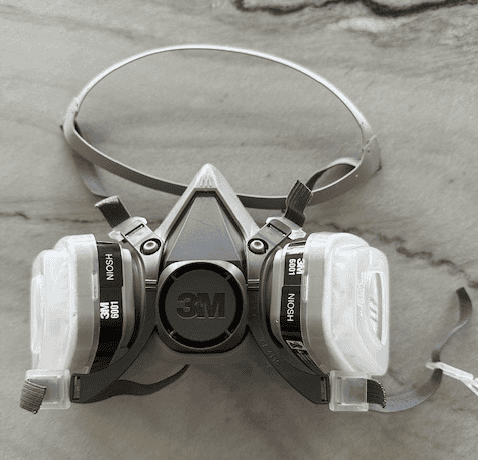A respirator is a device worn over the nose and mouth (or the entire face) to protect the wearer from inhaling harmful dust, fumes, vapors, or gases. Respirators are essential for ensuring safety in various DIY projects where exposure to hazardous particles or chemicals is a risk.
History
Respirators have a long history, dating back to the Plague Doctor masks of the 17th century. The modern respirator evolved significantly during the industrial revolution and further advanced in the 20th century due to military needs in World Wars I and II. Today, they are an integral part of workplace safety equipment and are commonly used in various industries, including construction, manufacturing, and healthcare.
Types of Respirators
- Disposable Respirators
- Half-Face Reusable Respirators
- Full-Face Reusable Respirators
- Powered Air-Purifying Respirators (PAPRs)
- Self-Contained Breathing Apparatus (SCBA)
Respirator Key Features
- Filtration Efficiency: The percentage of particles the respirator can filter out.
- Fit and Seal: Ensuring no air leaks around the edges.
- Breathability: Ease of breathing through the respirator.
- Comfort: Adjustable straps and lightweight design.
- Durability: Material quality for prolonged use.
Choosing the Right Respirator
Selecting the appropriate respirator depends on the specific hazards present in your DIY project. Consider the type of particles or gases you need protection from, the required filtration efficiency, and the duration of exposure. For instance, a simple dust mask might suffice for sanding wood, while a more advanced respirator is necessary for handling toxic chemicals.
Recommendations
Proper Use and Techniques
To ensure maximum protection, wear your respirator according to the manufacturer’s instructions. Make sure it fits snugly on your face without gaps. Perform a fit check by covering the respirator with both hands and inhaling sharply; if air leaks around the edges, adjust the fit. Always use the correct filter or cartridge for your specific needs.
Maintenance and Care
Regular maintenance and care of your respirator extend its life and ensure its effectiveness. Clean reusable respirators after each use with mild soap and water. Replace filters and cartridges as recommended by the manufacturer. Store your respirator in a clean, dry place to avoid contamination.
Respirator Safety Tips
- Always check for a proper fit before use.
- Replace disposable respirators regularly.
- Avoid touching the respirator while in use.
- Perform regular inspections for wear and tear.
- Be aware of the signs of respirator fatigue, such as difficulty breathing.
Conclusion
Respirators are vital for protecting yourself from hazardous substances during DIY projects. By choosing the right type, using it properly, and maintaining it well, you can ensure a safe and healthy working environment.


